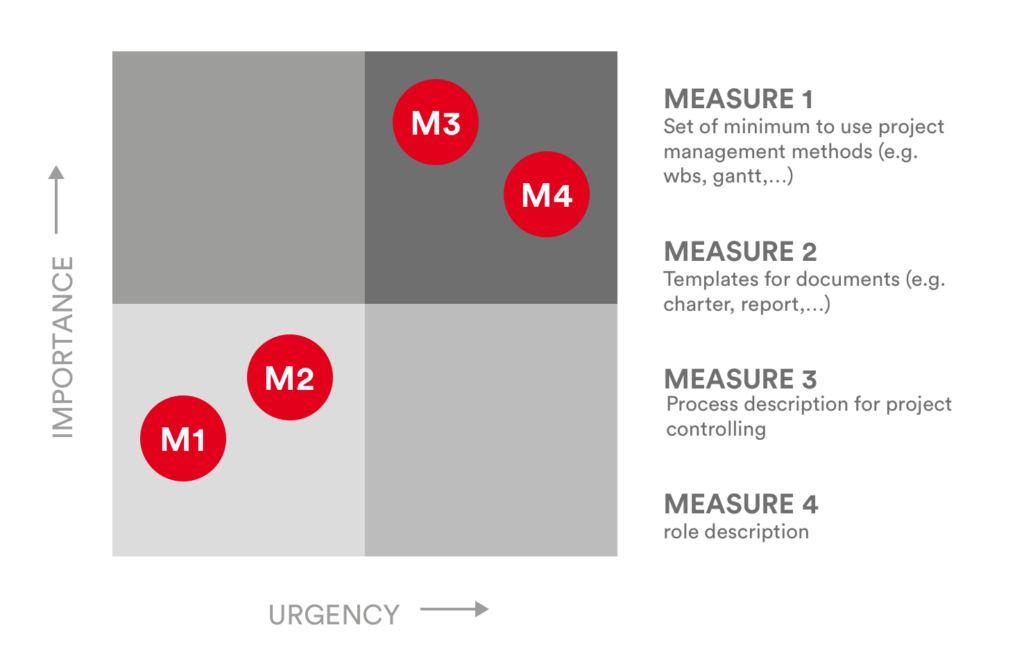10 Steps to Set Up a Successful and Sustainable PMO – Part II
Tobias Drugowitsch, PMCC Consulting GmbH and Gerald Aquila, ONEPOINT Projects GmbH
The Project Management Institute (PMI)® defines a Project Management Office (PMO) as “an organizational structure that may be used to standardize the portfolio, program, or project-related governance processes and facilitate the sharing of resources, methodologies, tools, and techniques.”
In other words, a PMO defines and maintains the project management rules and guidelines, trains and supports your project managers, and is usually responsible for implementing a PPM software solution to support everyday project work as well as portfolio reporting.
Setting up a successful and sustainable PMO is a significant challenge but provides excellent benefits if implemented correctly.
We developed the following ten steps to help you set up a PMO that fits your organization’s needs, aligns with your business goals, and is designed to outlast major organizational changes. So, let’s get started!
Tip 4: Define Hybrid KPIs
Key Performance Indicators (KPIs) for projects and/or portfolios help to maintain a clear and consistent overview of projects. They create transparency regarding interactions with other projects and, most importantly, support the decision-makers to make informed and timely decisions. KPIs further enable the comparison of different scenarios to show effects based on interactions between projects in a transparent way.
The set of KPIs you define must work for traditional as well as for agile projects. Fortunately, most established KPIs that originate from traditional PPM are also applicable for agile projects (especially Scrum). We have analyzed all KPIs defined by the PMI®’s PMBOK® Guide and found out that the Scheduled Performance Indicator (SPI) is the only KPI that cannot directly be used for Scrum projects. However, we believe that it can be replaced with the classic Velocity as defined by the Scrum framework because the calculation methods are quite similar.
To get started, we suggest that (unless you already have a set of KPIs in mind) you initially go with established KPIs such as SPI/Velocity and CPI (Cost Performance Indicator, based on Earned Value). Next, think about whether there are specific indicators to your company setup, processes, or business model that could be of value and add your own KPIs as needed.
Defining a good set of KPIs is an integral part of setting up a successful PMO. Always think of KPIs like the ones in the Earned Value analysis that work for single projects and portfolios.
Here, the progress is measured based on actual effort vs. effort-to complete (or actual costs vs. cost-to-complete for costs) over time. All these values are available for both traditional/waterfall and agile projects (think sprint planning in terms of time).
Tool-wise, it is essential to have quick access to your KPIs on the project and the portfolio level. Your KPIs are important for your decision-making process. Therefore, they should always be readily accessible – ideally in real-time. KPIs should also be reportable to include them in reports, such as project lists and status reports.
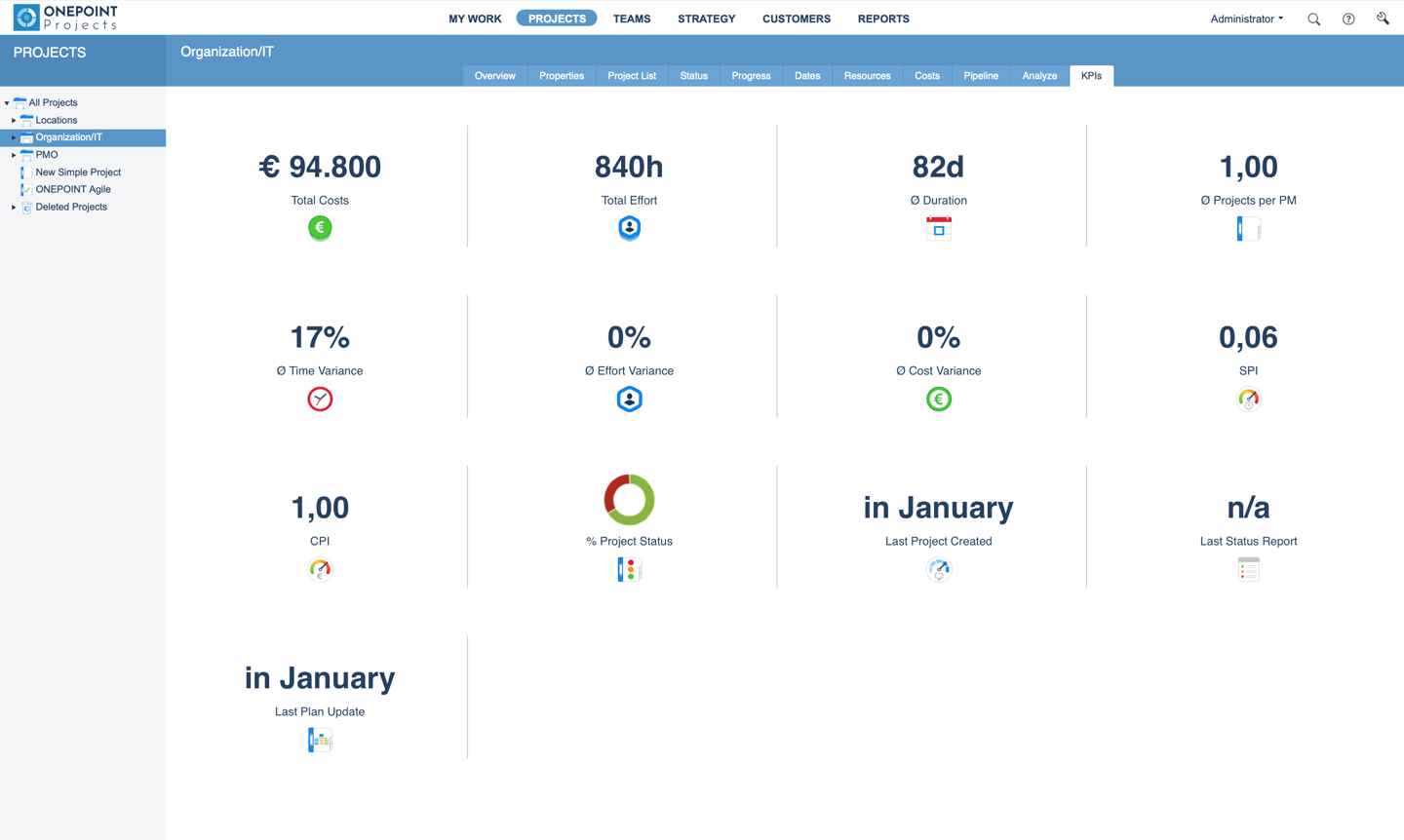
An example KPIs view from a PPM tool
Tip 5: Communicate the Benefit
Focus on both the organizational and the single project benefits in your journey to a successful PMO. Involve target groups in your considerations and communicate effectively with them. Do not focus on marketing buzzwords like “efficiency” or “KPI tracking”; instead, create an individual set of benefits for your organization.
Make sure to visualize these benefits, for instance, in the form of a roadmap. Make it very clear that you are setting this new PMO up to help your company or NGO succeed.
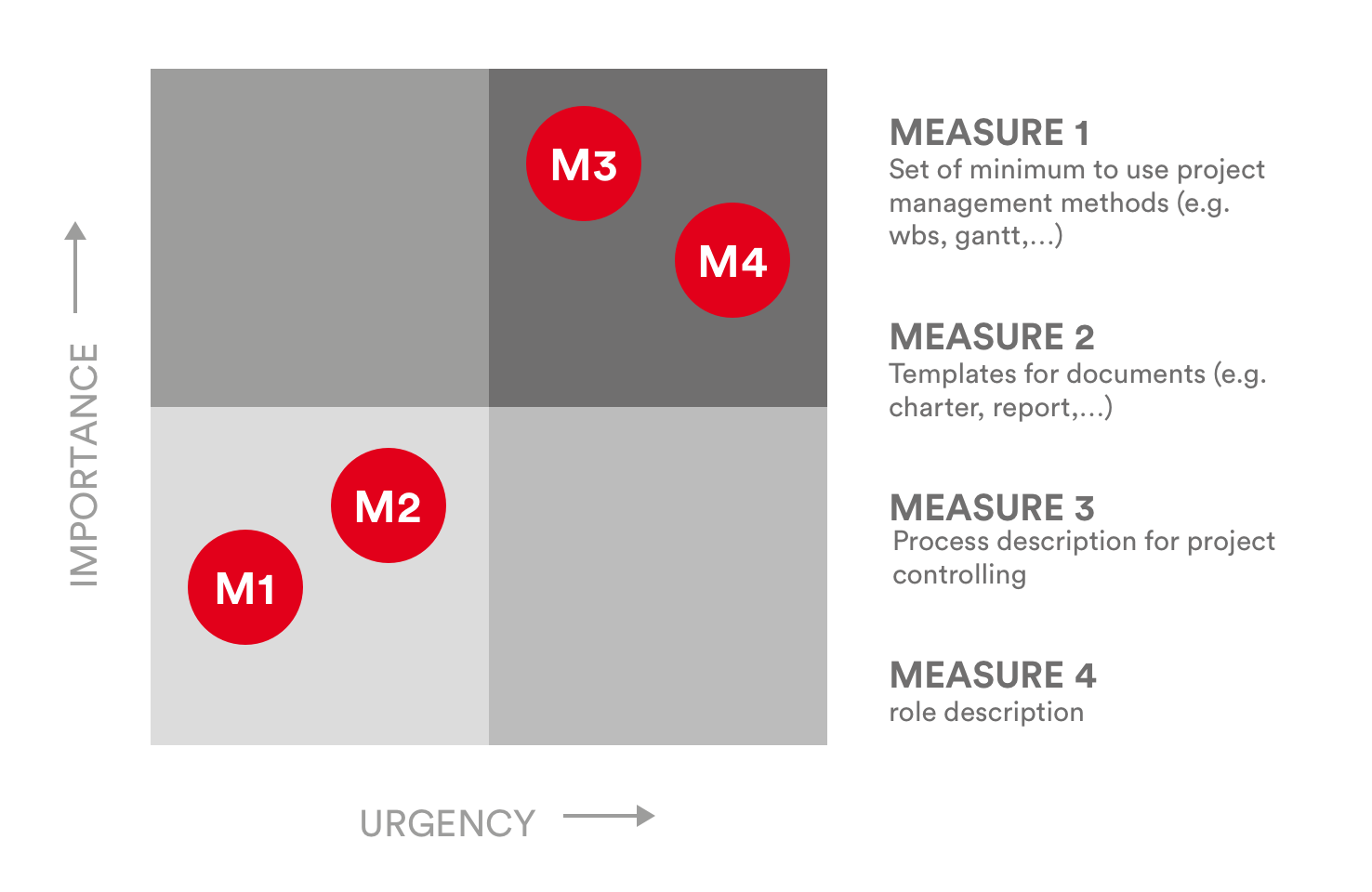
An Eisenhower Matrix for prioritizing measures
Tip 6: Obtain Long-Term Achievement
The establishment of a PMO will mean a significant, long-lasting change for the whole organization. It is important to focus on change management and stakeholder engagement to ensure that people are committed to its long-term success. This organizational change must be aligned with the company’s strategic goals and therefore become a part of the corporate strategy – otherwise, it will fail.
From a tool perspective, you ideally want a vendor who appreciates feedback and is interested in a long-term relationship. If users see that their feedback is valued and sometimes even built into the product, they will be much more motivated to use the tool. This, in turn, will ensure more up-to-date, higher-quality PPM data, which again will lead to more informed and better decisions.
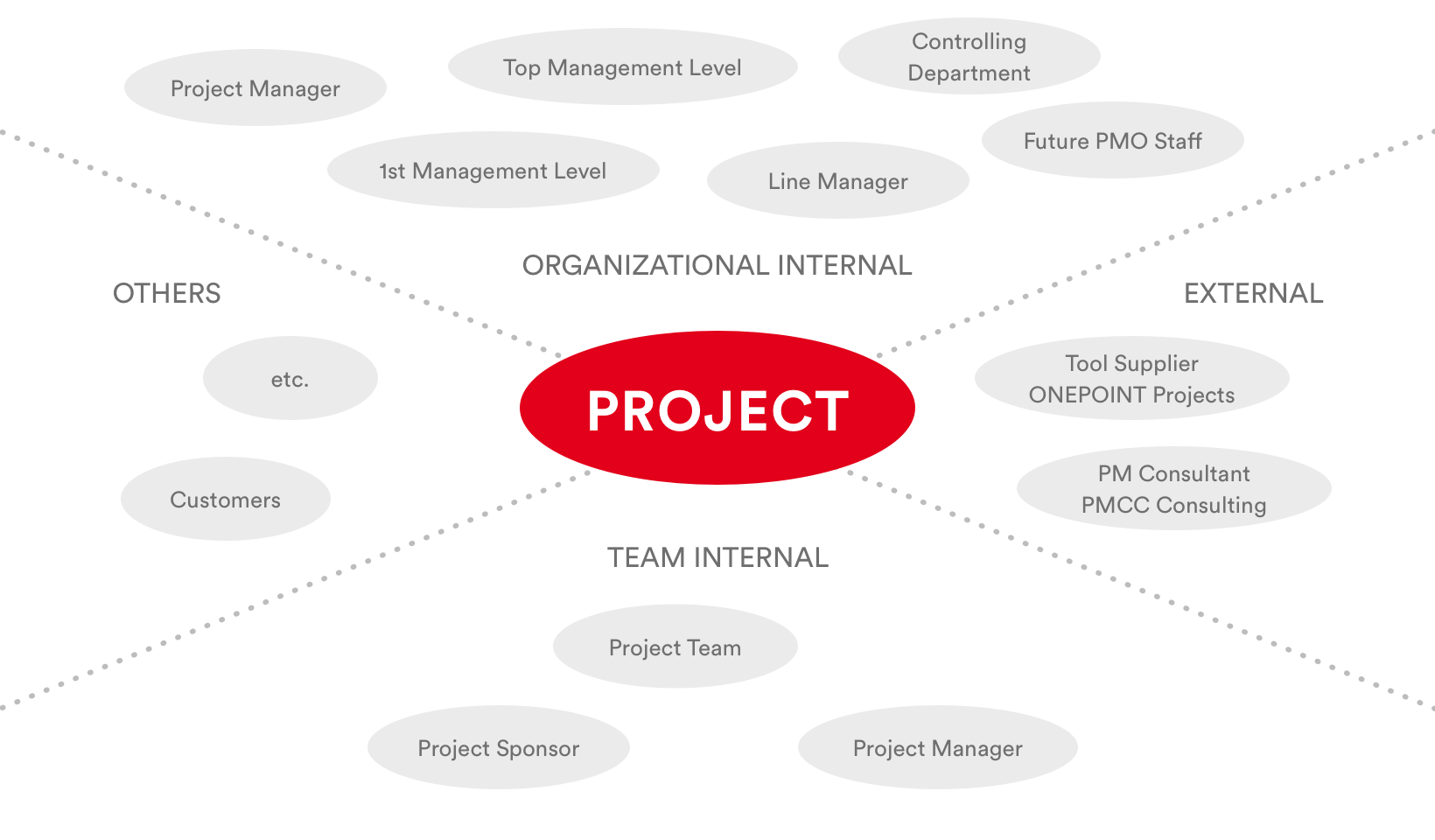
An example stakeholder analysis for a PMO project
Tip 7: Ensure Success Is Measurable
As already mentioned, the benefits of implementing a PMO need to be well defined early on and communicated clearly. However, these benefits must also be measurable so that they can be tracked and reported both during the introduction and after the initial rollout.
A good way to achieve this is to define explicit “deliverables” for your project managers and PMO such as, e.g.:
- A set of minimum project management methods that must be used (e.g. project charter, WBS, Gantt-chart, resource plan, cost plan etc.)
- Regular status reports as part of a standardized project controlling process
- A set of role descriptions to fill in to help your organization with setting up a proper project organization
- The required data to calculate the defined KPIs and the dashboards, or reports for communicating these KPIs for single and multi-project management
Of course, do not forget to regularly communicate these deliverables’ status to all relevant stakeholders
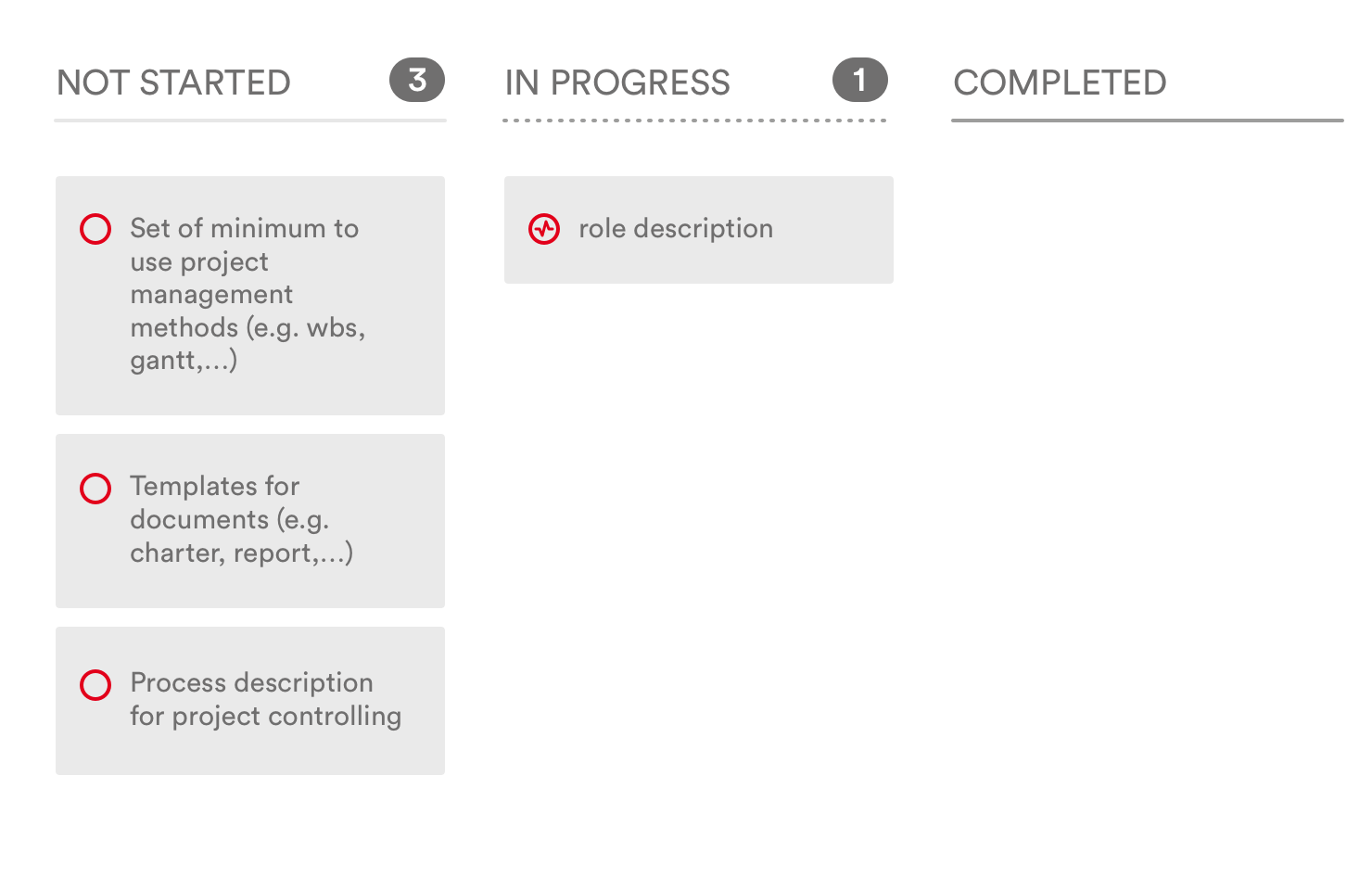
A good way to measure progress: the Kanban board
Click here for the next tips:
Tip 8: Maintain Motivation | Tip 9: Keep It Flexible and Adaptive | Tip 10: Make it a Project
Alles schön und gut …
… aber Sie benötigen jetzt Unterstützung?
Sie wollen Ihre Projekte effizienter machen und damit Geld und Zeit sparen?
Sie wollen Ihre Projekte künftig agil und leichtfüßig managen?
Sie wollen Ihre Projekte, die Innovationskraft und die Kreativität vorantreiben?
Sie wollen Ihre laufenden Projekte effizient steuern und strategisch wichtige Portfolio-Entscheidungen treffen können?
Ihr PMO benötigt Starthilfe oder soll wieder auf Vordermann gebracht werden?
